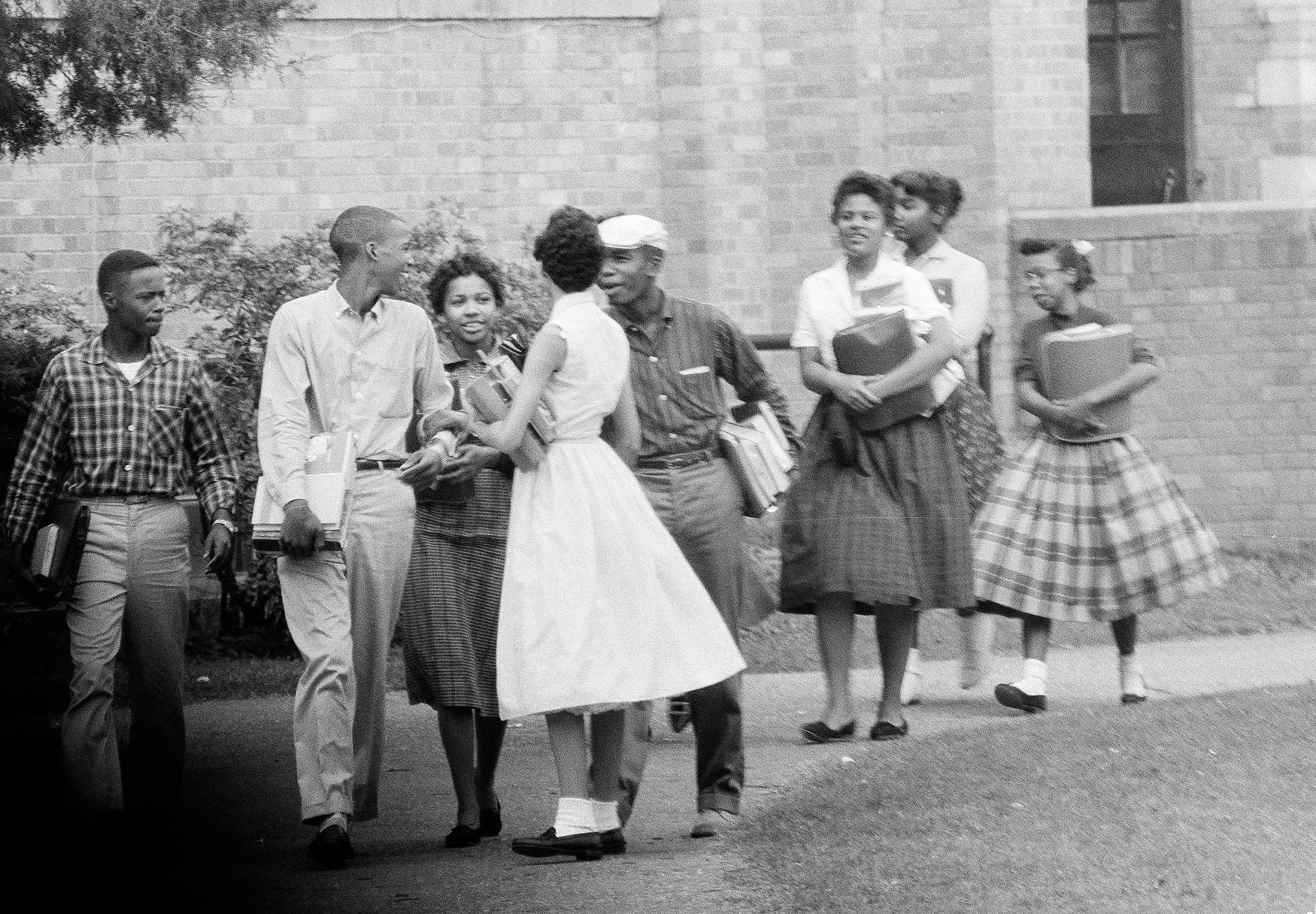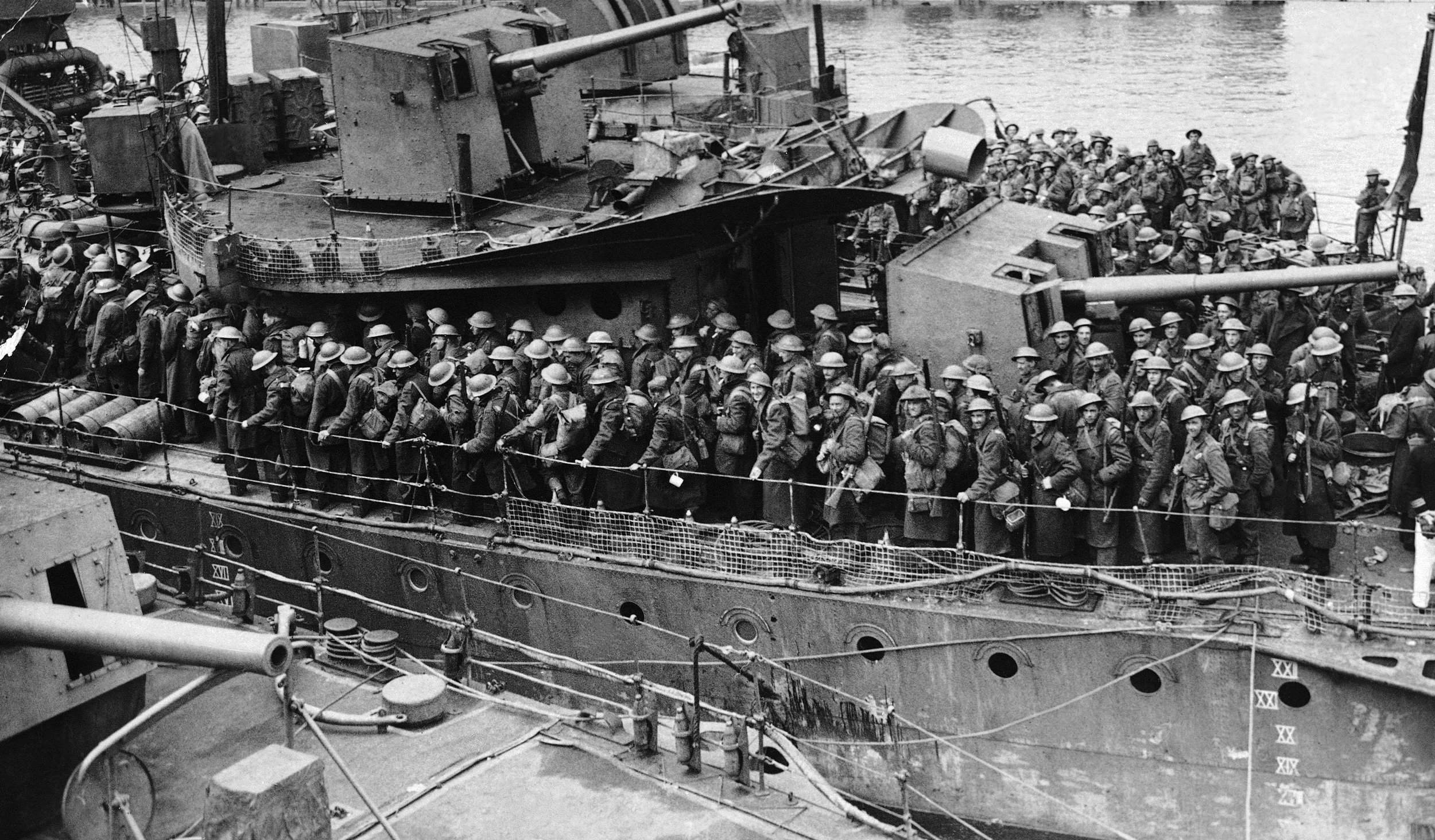Sixty years ago, the Little Rock Nine became a symbol of heroism

EDITOR’S NOTE: On Sept. 25, 1957, two days after a large, white mob turned violent outside Little Rock Central High School, nine black teenagers returned with federal troops.
The troops, armed with bayonets, were there on the orders of President Dwight Eisenhower, who was displeased with the riots that had broken out Monday morning after the teens, six girls and three boys, attempted to attend classes. The local police could not control the angry mob so the nine teenagers slipped out the back door of the school. Eisenhower ordered the troops there the following day and they were in position by Wednesday morning.
Sixty years ago, the Little Rock Nine became a symbol of heroism in the throes of racial progress.
This combination of photo shows the nine black teenagers who had to be escorted by federal troops past an angry white mob and through the doors of Central High School in Little Rock, Arkansas, on Sept. 25, 1957. Top row from left are Minnie Brown, Elizabeth Eckford and Ernest Green; middle row, Thelma Mothershed, Melba Pattillo and Gloria Ray; bottom row, Terrence Roberts, Jefferson Thomas and Carlotta Walls. (AP Photos)
AP reporter Relman Morin was among those who were there to write about the effort to integrate Little Rock Central High School during the 1957-58 school year.
Below is republishing of Morin’s report from 1957 as part of our coverage of the Little Rock Nine anniversary:
___
Hardened paratroopers, in battle dress and with bayonets at the ready, brought nine Negro students quietly into Central High School Wednesday in a new climax to the hate-filled struggle over integration in Little Rock.
Black students leave the home of Mrs. L.C. Bates, president of the Arkansas NAACP, on the morning of Sept. 25, 1957 to walk toward a station wagon driven by a trooper from the 101st Airborne Division enroute to Central High School. (AP Photo)
One man was clubbed and another stabbed in the arm by the soldiers in the fights that followed.
A few white students left the school after the Negroes entered, but there was no sign of a mass exodus. A school official said 1,250 students were in class Wednesday, making 750 absentees. It was 50 more absences than Tuesday when it was known the Negroes would not appear.
Federal troops escort black students as they enter Central High School in Little Rock, Ark., during the first week of student integration in Sept. 1957. (AP Photo)
The troops are U.S. Army regulars, units of the 327th Infantry, 101st Airborne Division. They arrived Tuesday night on orders from President Eisenhower.
At 11:20, about two hours after the Negro students entered, the school grounds suddenly filled with students and teachers. Reporters said they were told it was a fire drill, but there was another report that police were investigating a report of a bomb scare.
In this Sept. 25, 1957 photo, nine African American students enter Central High School in Little Rock, Ark., escorted by troops of the 101st Airborne Division. (AP Photo)
Two Negro girls, Thelma Mothershed and Minnie Brown, came out with the white students. Minnie Brown walked beside a blonde white student. They were talking together and laughing.
A reporter called from across the street:
“Are you making any friends, Minnie?”
“Quite a few,” the girl called back, flashing a smile.
During a fire drill at Central High School in Little Rock, Ark., Minnie Brown, one of the nine black students escorted into school, stands with a group of white classmates outside the school, Sept. 25, 1957. (AP Photo)
Thelma Mothershed talked with one of the teachers.
The white students were laughing and joking with the paratroopers as they waited on the lawn.
In an arc, two blocks wide, around the high school, the paratroopers kept breaking up clusters of people, moving them back, herding them onto porches, and keeping the area clear.
They moved with swift, purposeful actions.
In this Sept. 25, 1957 photo, a U.S. Army paratrooper uses the butt of his rifle to nudge along a man identified as C.E. Blake, who was hit in the head when he tried to take a weapon from a trooper near Central High School in Little Rock, Ark., where integration is being enforced by the Army. (AP Photo)
It was in these operations that the two men were injured. C.E. Blake, 46, a railroad employee, tried to grab a paratrooper’s rifle, soldiers said. The trooper, quickly reversing it, struck Blake over the eye with the butt. He fell to the street but did not appear to be seriously injured.
Paul Downs, Springfield, Ark., got a bayonet cut in the arm apparently when he was too slow in obeying an order.
In this Sept. 25, 1957, photo, white girls from Central High School laugh as troopers with bayonets force them to move in Little Rock, Ark. (AP Photo)
Jess Matthews, high school principal, reported “everything is calm inside the school and education is proceeding normally.”
Outside the school a line of paratroopers, spaced about three yards apart, stood in the street. Behind them, jeeps equipped with walkie-talkies, were stationed at strategic points.
Troops from the 101st Airborne Division of Ft. Campbell, Ky., stand guard at Central High School at dawn in Little Rock, Arks., Sept. 25, 1957. The school can be seen in background. (AP Photo)
Four soldiers stood just outside each of the first-floor doors, and others guarded the long, slanting steps leading up from two sides to the main entrance.
A “front” began to develop before 8 a.m., in the outlying vicinity. The first move came when Maj. James Meyers, San Antonio, Tex., ordered a squad of soldiers to disperse about a dozen boys and men who gathered around the gas pumps in a service station just across the street.
“Move on out,” Meyers told the group.
Sullenly, but with no word, the men began walking down the sidewalks.
Troopers of the 101st Airborne Division keep a small crowd moving that had gathered September 25, 1957, across the street from Central High School, Little Rock, AR. (AP Photo)
For a while, silence settled over the school. Only the squawking of the walkie-talkies broke the morning calm.
Then a bigger crowd began to congregate at the corner of 16th and Schiller, a full block from the school.
A youth in a pink shirt, glaring defiance at the soldiers, jeered, “Why don’t you tin soldiers go home?”
Meyers suddenly picked up the speaker on the public address system.
“You are again instructed to go to your homes peacefully,” he said. “Disperse and return to your homes.”
The people did not move. They were not menacing. They said nothing. But they did not move.
Meyers quietly picked up the walkie-talkie, connecting him with the command post.
He called for two platoons.
A command jeep patrols the area in front of Central High School in Little Rock, Ark., Sept. 25, 1957, as troops of the 101st Airborne Division stand with fixed bayonets. The troops were sent to keep order in the integration of the school. (AP Photo)
Almost instantly, the helmeted soldiers came dog-trotting down the street, rifles held across their chests.
Meyers broke the platoon into two groups, and ordered them to approach the crowd from the flanks.
Breaking into a run, the soldiers separated. One group headed for the crowd on the sidewalk, the other moved in on the people on the lawn.
In this Sept. 1957 photo, students are watched by soldiers and reporters as they leave Little Rock's Central High School in Little Rock, Ark. (AP Photo/Will Counts)
They did not appear to touch the people with the bayonets. But they forced those on the sidewalk far down the street. Those on the lawn were herded onto the porch.
The people were curiously silent. There was some muttering, but no shouting or real noise. They kept falling back.
The same scene, on a similar scale, was repeated several times between 8 and 9 o’clock.
Then, suddenly, at the south end of the school, the barricades parted and an Army station wagon rolled through, with jeeps ahead and behind.
Shouts broke out, “there they come.”
The Negro students were in the station wagon with an Army officer.
In this Oct. 2, 1957, photo, the first black students to enroll at Central High School in Little Rock, Ark., leave the building and walk toward a waiting Army station wagon following their classes. Monday, Sept. 25, 2017, marks the 60th anniversary of when nine black students enrolled at the Arkansas school. One of the nine students is obscured by another student in this photograph. (AP Photo/Ferd Kaufman)
The car came to a stop opposite the front of the school, inside the line of paratroopers. The students got out quietly.
Again, without hurrying, they walked across the spacious grounds toward the steps.
The six girls were all wearing summer dresses, gaily colored. The three boys were in open throat shirts.
Windows on the second floor of the school were filled with the heads of white students, watching.
Then the Negroes mounted the steps and went inside. It was all over in an instant.
The only excitement now, by contrast to the wild riot that broke out Monday when the Negroes went through a side door, came from the scurrying of scores of reporters and cameramen, trying to get near the scene.
Nine black students leave Central High School in Little Rock, Ark., after classes, Sept. 25, 1957. They are being escorted from a side door by troops of the 101st Airborne Division. (AP Photo)
Paratroopers kept yelling “back ... back on the sidewalk.” And they enforced it, as they had done with the bystanders earlier.
But the story is by no means ended.
Passing among the people nearby — many of whom had been dispersed by the troops — you heard, over and over again:
“Let ’em do what they want now.
“But they can’t keep those soldiers here indefinitely and the minute they’re gone, you’ll see —”
Two paratroop officers escort black students from Central High School in Little Rock, Ark., September 27, 1957. School was closing for the weekend. (AP Photo)
Ending their 10th day of integrated classes at Little Rock Central High School at Little Rock, Ark., nine black students are escorted by armed Guardsmen to a waiting Army station wagon, as school closed for the weekend, Oct. 4, 1957. (AP Photo/Richard Tolbert)
For more on the Little Rock Nine, including historical stories and photos, and video interviews with people who lived through the era, visit http://www.apnews.com/tag/LittleRockNine.
Text from the AP news story, AP Was There: Paratroops with bayonets escort Little Rock 9, by Relman Morin.
Visual artist and Journalist







